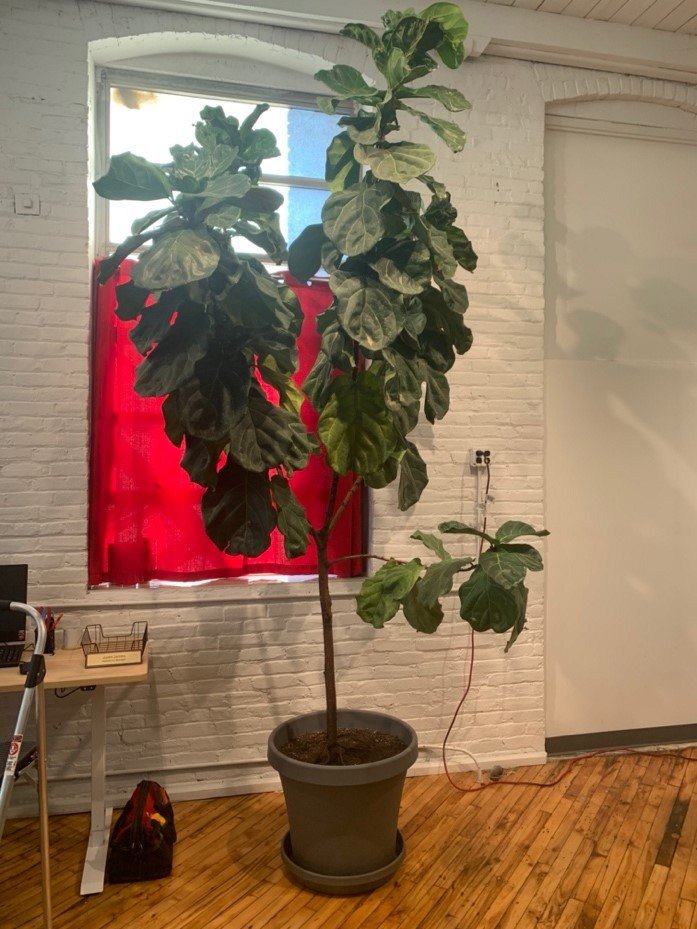
Table of Contents
What is a fiddle leaf fig?
The fiddle leaf fig, scientifically known as Ficus lyrata, is a flowering plant that is native to the Western African rainforests. Its name stems from its leathery leaves; lyrate leaves resemble the shape of a lyre (an ancient Greek string instrument). These plants that have picked up in popularity over the recent years with The New York Times labelling it the “it” plant of the year. They are part of a plant family known for producing fig fruits, however it is very rare to find a fiddle leaf fig plant that fruits outside of its natural habitat. There are a few reasons for this but the main one is that it is very unlikely any grower will be able to replicate rainforest conditions long enough to allow the plant to fruit. This shouldn’t detract from your desire to grow one, these elegant plants will be the statement piece of any room they are put in.Where should I put my fiddle leaf fig?
The answer to this question lies within some self-reflection. Do you want a whole fiddle leaf fig tree, or do you want a smaller plant? Do you want it to be the focal point of your room or just a part of the mini jungle you’ve designed? Before you reach an answer, you should keep these things in mind.- Height of room
- Amount of time you are willing to care for it
- Light sources (Natural or artificial)
- Knowledge of the plant
Fiddle Leaf Fig Basics
Here is some basic information on the fiddle leaf fig.
A 10-foot-tall fiddle leaf fig here in our office in Bethlehem, PA
Height
One of the bigger issues when growing a fiddle leaf fig arises when seeing how tall these things grow. In its natural habitat of the West African rainforests, they can grow up to 50 feet tall. Considering you most likely don’t have 50-foot-tall ceilings in all of your rooms, you should consider yourself lucky that they tend to not reach those heights outside of their natural habitats. Even a potted plant can reach 10-feet-tall. Places like Home Depot sell small fiddle leaf fig plants for under $40! These smaller plants is a great place to start.Time
As is the case with most things in life: if you want good results, you’re going to have to work for them. The fiddle leaf fig plant is no different. Known to be one of the more finicky plants to cultivate, it will take a decent amount of time and effort to turn your plant into the centerpiece you so desire. Fiddle leaf fig plants do not like:- Cold Drafts
- Too wet soil
- Too dry soil
- Too much light
- Too little light
- Dry air
Light
Possibly the most important part of growing plants is the light. Light is how plants grow, they use carbon dioxide water and light to perform photosynthesis, which allows them to produce more plant mass. Not enough light will stunt a plant’s growth. Too much light will give your plant leaf burn. Fiddle leaf figs require moderately bright light for about 6 to 8 hours a day. If you don’t have a window large enough or live in a region of the world that doesn’t get consistent sunlight, we recommend a plant light to help provide ample light to your plant.
A fiddle leaf fig growing under a Vita growlight



